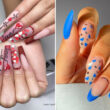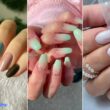In This Article Show
When it comes to personal style, it’s not just about following the latest trends; it’s about discovering what makes you feel confident and uniquely you. I’m here to share some practical tips that I’ve learned on my journey to finding a personal style that reflects who I am and works for my full-speed-ahead life.
Let’s be real – personal style is more than the clothes hanging in our closet. It’s the armor we wear to face the world, the first impression we make without saying a word, and a way to tell our story.
Finding and owning your style can be a game-changer. It simplifies shopping, makes getting dressed a breeze, and ensures you step out the door feeling self-assured every single day.
Whether you’re running errands, heading to the office, or playing chauffeur to your little ones, your style is a constant companion.
From understanding the shapes and colors that flatter you most to incorporating a signature piece that screams ‘this is me,’ I’ve got eight solid steps to guide you towards embracing a style that not only looks great but feels like home.
Understanding Your Body Shape and What Flatters It
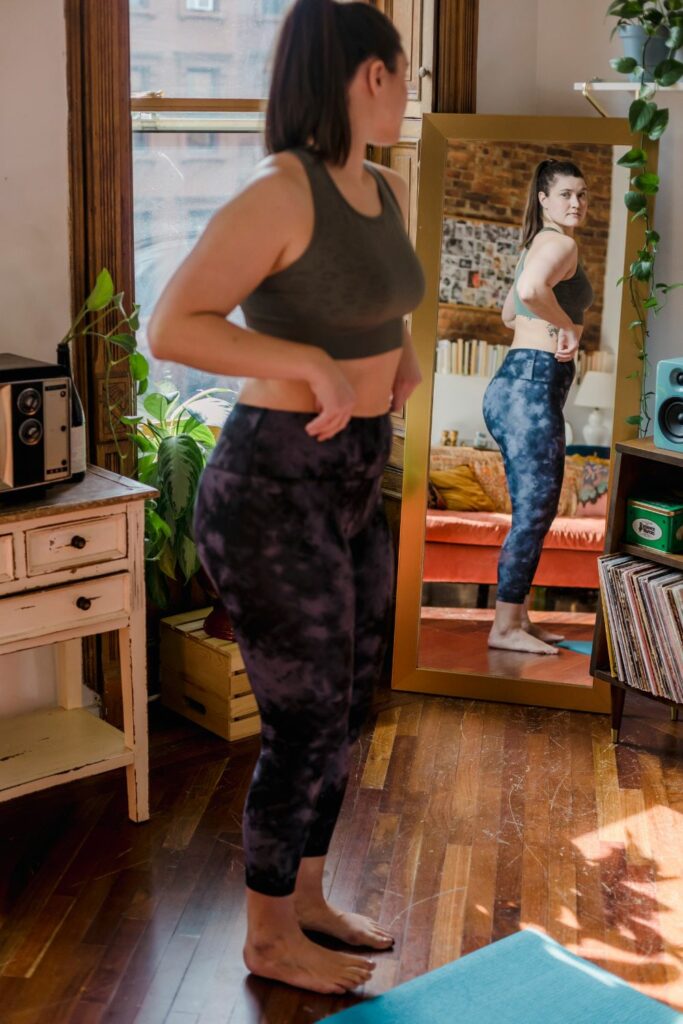
Finding your personal style starts with a fundamental step: recognizing your body shape and knowing what truly flatters it. Like anything in life, fashion is about embracing your strengths. And trust me, every shape has its superpowers when it comes to style.
Great deals to snatch for your little ones 🎉
There are generally five basic body shapes most of us fall into apple, pear, rectangle, hourglass, and inverted triangle. Each has its balance and beauty, and the goal is to highlight your best features with clothing that’s perfectly suited to you.
If you’re an apple, your midsection is usually fuller. Clothes that create a visual balance, such as V-neck tops or dresses, and A-line skirts, will be your best friends.
The pear-shaped among us have fuller hips and thighs, and shining a spotlight on your waist and upper body with fitted tops and A-line dresses will showcase your frame beautifully.
Rectangles have a more athletic build, often with a less defined waist. Here, you can have fun creating curves with belts to cinch in your waist or play with textures and layers to add depth to your style.
Hourglass figures, with their balanced bust and hips and distinct waist, can capitalize on their curves with tailored, fitted pieces that draw attention to their silhouette.
And if you’re an inverted triangle, with broader shoulders and a narrower waist and hips, you’ll look fantastic in clothes that add volume to your lower body, like wide-leg pants or full skirts, balancing your upper body.
But let’s not forget the importance of fit and proportion – they’re the secret sauce of personal style. No matter your shape, clothes that fit you flawlessly will always look better than those that don’t. Tailoring isn’t just for the rich and famous; it’s an affordable way to make any piece look custom-made for your body.
Proportion is about balancing your look. For instance, if you’re wearing a loose blouse, pair it with fitted pants. This creates harmony in your outfit that’s visually pleasing and feels good to wear. It’s like creating a visual rhythm that can turn a simple outfit into a statement of style.
Remember, the goal is not to fit into a specific size or copy someone else’s style. It’s about creating a look that feels authentic to you and celebrates your shape. Clothes should fit you; you shouldn’t try to fit into them. That’s when you’ll truly start to own your personal style.
Assessing Your Lifestyle and Daily Activities
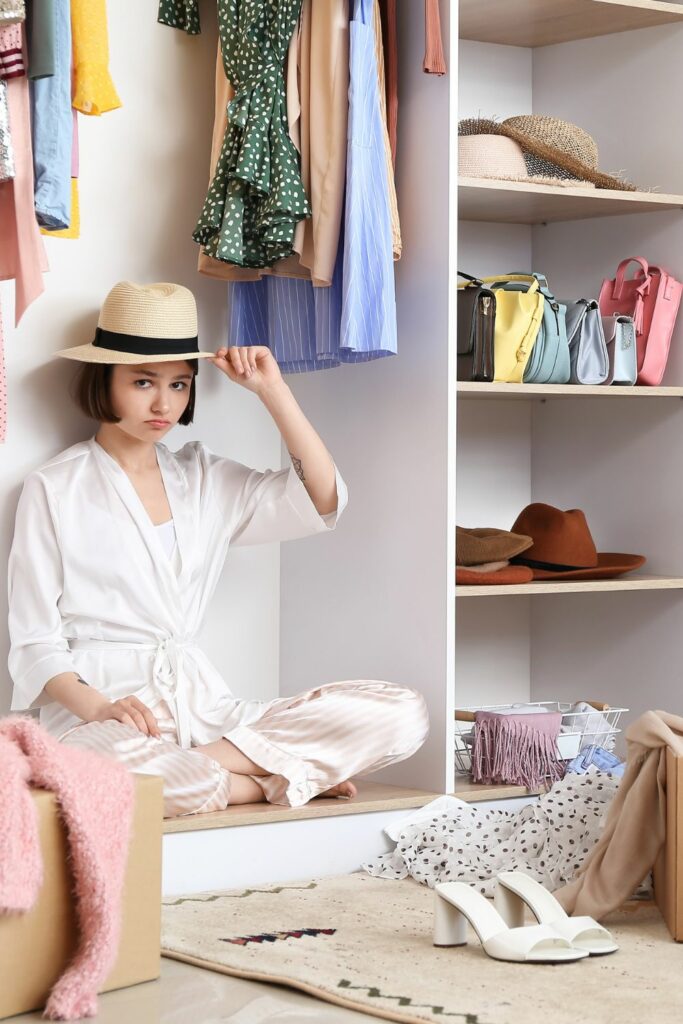
Your wardrobe shouldn’t just mirror your personal taste; it should seamlessly fit into your everyday life. This means your work environment, social activities, hobbies, and even your daily commute should influence your style choices. It’s about creating a functional wardrobe that doesn’t just look good but works hard for you.
If your job is in a corporate office, chances are you’ll lean towards a more structured and polished look – think tailored pants, blazers, and smart blouses. However, if you’re in a creative field, you might have the freedom to experiment with bolder patterns, unique silhouettes, and pops of color.
On the other hand, stay-at-home parents or remote workers might prioritize comfort and flexibility, opting for stylish yet practical pieces that can handle a day of varied tasks.
Your social life also plays a role. Do you spend your weekends at casual brunches or formal dinners? Your choices might range from easy-going maxi dresses to chic cocktail attire. And for those who love a good workout or outdoor adventure, activewear, and durable materials become a staple part of our fashion equation.
So, how do you build a wardrobe that keeps up with all these facets of your life? Start with a solid foundation of quality basics that can be mixed and matched – neutral-toned T-shirts, jeans that fit like a glove, versatile sneakers, and a classic little black dress. These are your sartorial building blocks that transcend occasion and trend.
Next, consider layering pieces. A well-chosen blazer, for instance, can elevate a casual outfit or make a work ensemble more authoritative. Cardigans, lightweight jackets, and tailored vests are also great for adjusting a look to suit various settings.
Don’t forget to accessorize. Accessories are the easiest way to transition an outfit from day to night or from professional to playful. A statement necklace or a silk scarf can add a touch of elegance, while a leather tote or a sleek laptop bag can marry functionality with style.
Lastly, practice the art of wardrobe rotation. Keep your closet in sync with your life by rotating pieces in and out with the changing seasons or as your daily activities shift. This will not only keep your wardrobe fresh but will also ensure that you’re always prepared, no matter what the day throws at you.
By considering the practicalities of your life and choosing clothes that serve you in real, tangible ways, you develop a personal style that’s not just about looking good, but feeling good – because it aligns perfectly with the life you’re living.
Drawing Inspiration from Style Icons and Influencers

Whether it’s the effortless elegance of Audrey Hepburn, the boldness of David Bowie, or the modern-day allure of Tracee Ellis Ross, style icons can be a treasure trove of inspiration. Their looks have defined eras, started trends, and showcased personal expression at its best. So, let’s tap into that rich vein of sartorial wisdom!
Begin by exploring the styles of icons that resonate with you. Are you drawn to the classic simplicity of icons like Grace Kelly or the eclectic vibrancy of contemporary influencers? Pinpointing what appeals to you about their looks is the first step toward translating that inspiration into your wardrobe.
But here’s the key: Don’t copy; instead, extract. Maybe it’s the way your favorite style muse layers textures or how they incorporate vintage pieces into modern looks. These elements can serve as a blueprint for you to develop your own, distinct style narrative.
Now, to make it your own. Let’s say you adore how a style influencer plays with color. You can adopt this approach by choosing hues that suit your palette and lifestyle, rather than the exact shades they wear. If an icon’s signature is their bold prints, find a print that speaks to you and makes you feel just as empowered.
One of the most enjoyable ways to experiment is through what I call ‘style sampling.’ You can borrow a specific element—like high-waisted trousers, a type of hat, or a material like silk—and work it into your outfit to see how it feels. Think of it as trying on a new character in your personal style play.
Accessorizing is another avenue where you can echo the essence of an icon’s style. Perhaps invest in a type of accessory that they’re known for—a watch, a type of shoe, or a scarf—and let that be a nod to your muse while keeping the rest of your outfit tuned to your personal taste.
The beauty of this approach is that it keeps your style fresh and evolving. You’re not stuck in a single look; you’re growing and adapting, drawing from a well of inspiration that’s as dynamic as fashion itself.
In the end, remember that imitation may be the sincerest form of flattery, but it’s the personal twist that makes a style genuinely memorable. Use style icons as a launchpad to express your individuality and creativity, and you’ll find that your personal style will become as iconic and inspiring as those who paved the way.
Color Analysis: Discovering Your Palette
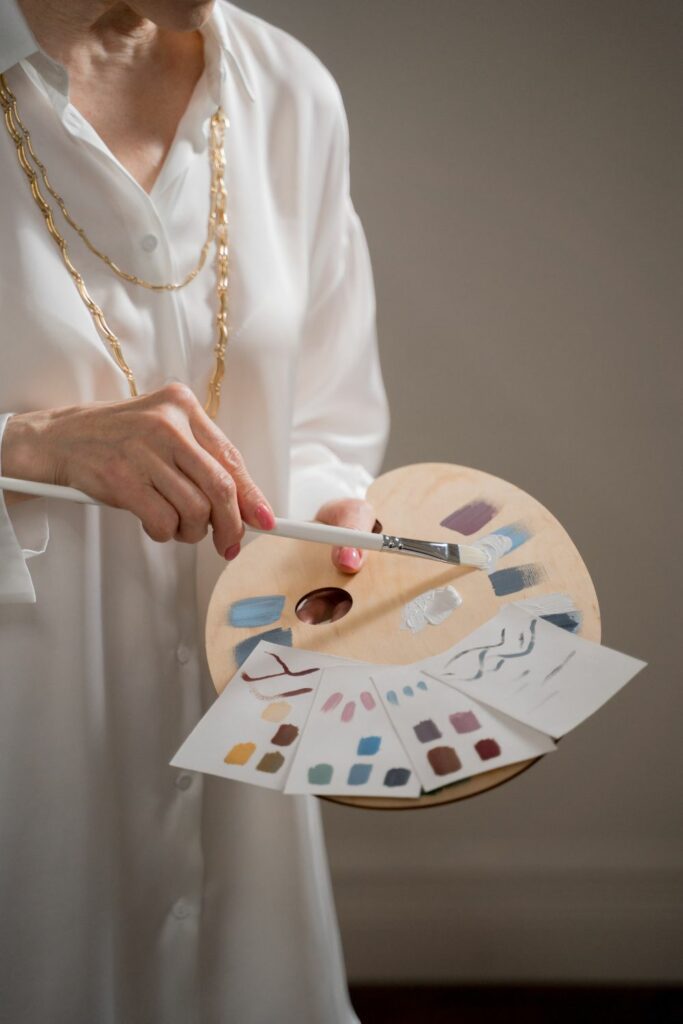
Color can be a powerful tool in your personal style arsenal—it can transform your look, mood, and even how others perceive you. But with an endless spectrum of shades available, how do you determine which ones are your true match? Enter color analysis, a method to uncover the palette that harmonizes with your natural coloring.
Firstly, consider the basics of your natural appearance: your skin tone, eye color, and hair color. They set the stage for the colors that will complement you best. An easy starting point is to look at the veins on your wrist—are they more blue or green? Blue indicates cool undertones, while green suggests warm undertones.
Seasonal color analysis takes this further by categorizing your coloring based on the four seasons: Spring, Summer, Autumn, and Winter. Each season represents a set of characteristics and colors that can help guide you toward your best hues.
Spring types typically have a warm and clear look with a golden or peachy undertone to their skin and may suit warm, fresh colors like coral, turquoise, and cream. Summer folks often have cool and soft natural coloring and can shine in pastels or muted colors like lavender, soft blue, and rosy pink.
Autumn types usually boast a rich, warm look with earthy undertones and can look stunning in colors that echo the fall season—think olive green, orange, and camel. Winters, on the other hand, have a cool and contrasting appearance that can carry bold, icy, or jewel tones well—like sapphire blue, emerald green, or crisp white.
To find out where you fit, you don’t necessarily need a professional analysis. Start with a simple experiment: hold different colored fabrics up to your face and observe the effects.
Which ones make your skin glow and your eyes pop? Which ones seem to cast a shadow on your face, or make you look tired? The right colors will enhance your natural features, not overshadow them.
Additionally, don’t forget about neutrals—they’re the backbone of your wardrobe. Identifying whether you’re more suited to stark blacks and whites or softer taupes and ivories is equally important.
It’s important to note that while seasonal color analysis can be incredibly helpful, it’s not a strict rulebook. Personal preference plays a role too. If you love a color that doesn’t “theoretically” suit you, wear it confidently. It’s about finding a balance between the colors that love you and the colors you love.
Ultimately, discovering your palette is about enhancing your natural beauty and expressing your personality. When you wear colors that complement your natural tones, you’ll notice a difference: you’ll likely receive more compliments, and feel more confident, and your style will have that effortless cohesion that we all strive for.
The Power of a Signature Piece
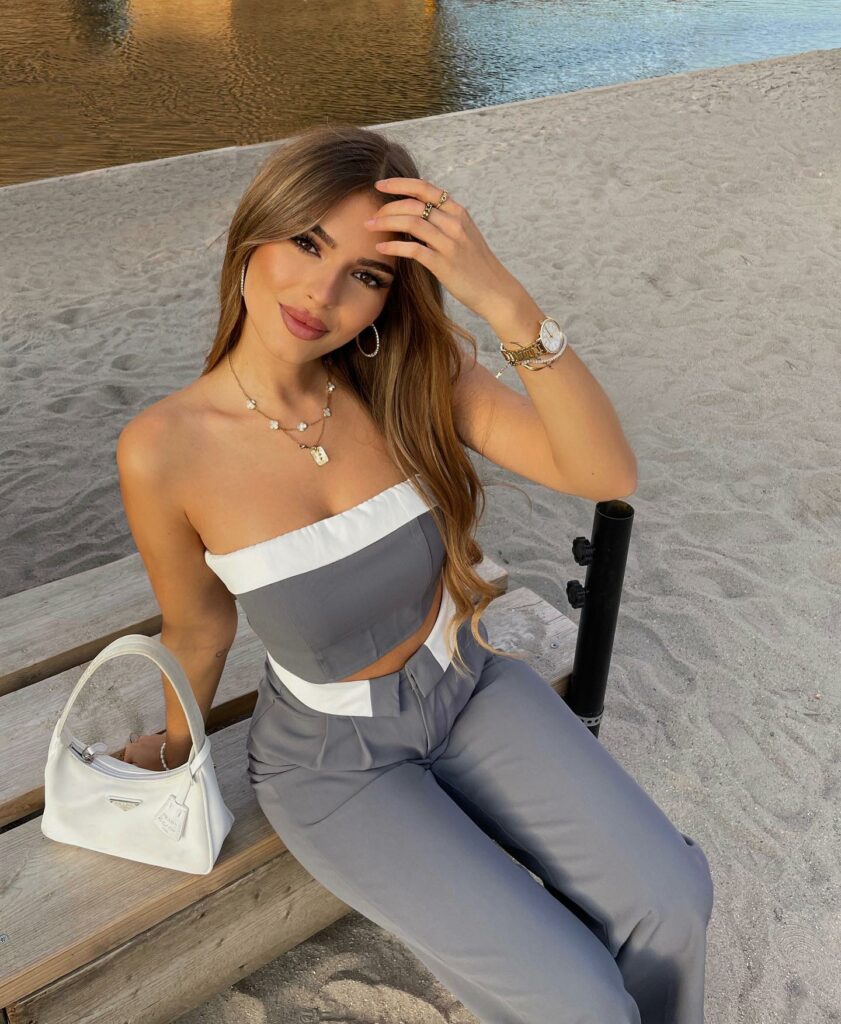
A signature piece is that go-to item in your wardrobe that not only feels inherently you but also pulls together your outfits with unmistakable flair. It’s like a personal trademark, a consistent element in the flux of fashion trends that proclaims your style identity.
The allure of a signature piece is that it can anchor your personal style, giving you a distinctive look that becomes almost synonymous with your name. It’s a visual cue to others that defines your style without the need for words. And the beauty of it? It can be anything you love and feel great wearing.
Let’s explore some examples
Accessories
This is perhaps the easiest way to establish a signature. It could be a type of jewelry, like a chunky ring, a string of pearls, or a particular watch. It doesn’t have to be extravagant; it just has to be you. Even glasses can be a striking signature, framing your face and expressing your personality.
Shoes
They say you can tell a lot about a person by their shoes. Choosing a distinctive style of footwear as your signature can make a lasting impression. Whether it’s a pair of vintage boots, bright red heels, or sleek, minimalist sneakers, let your feet do the talking.
Jackets
Outerwear is a significant element of style given its visibility. A leather moto jacket, a tailored blazer, or a well-worn denim jacket can encapsulate your style ethos. This piece can pull together even the simplest of outfits, making a statement and solidifying your style presence.
Hats
For those who dare, a hat can become a striking signature. Whether it’s a fedora, a beret, or a baseball cap, if it suits you and your lifestyle, it can be a wonderful constant in your personal style equation.
Bags
A distinctive bag that you carry daily can be both practical and expressive of your style. It might be a vintage handbag, a functional yet stylish backpack, or a classic tote in an eye-catching color.
Scarves
A beautiful scarf can be a hallmark of sophistication and style. Whether it’s a patterned silk scarf or a cozy, oversized knit, the way you wear it can become a part of your signature look.
The key to choosing a signature piece is making sure it’s something that integrates well into your existing wardrobe, fits your lifestyle, and most importantly, that you feel a connection with.
This piece should be something that you naturally gravitate towards, even subconsciously—it feels right every time you put it on.
Remember, the signature piece is not static; it can change as you grow and evolve. The idea is to have a consistent thread that ties your personal style journey together, offering a glimpse into who you are, season after season.
Embrace the power of a signature piece, and watch how it adds a defining edge to your style.
Curating Your Wardrobe with Intention
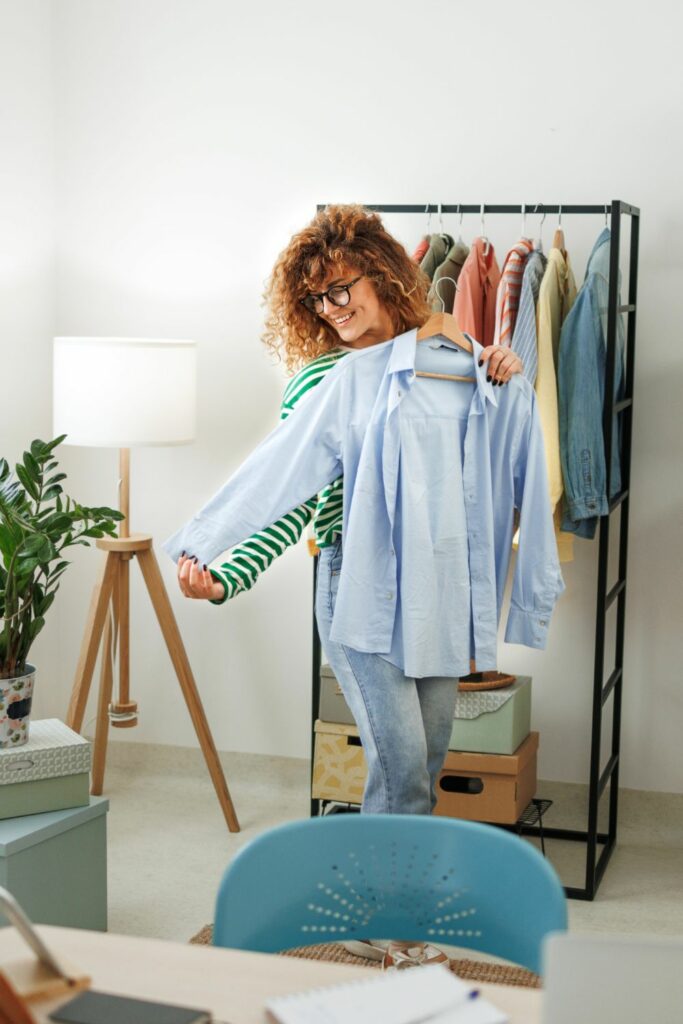
Building a wardrobe with intention is like creating a personal art collection; each piece should have a purpose and a place. The journey to a cohesive wardrobe that not only reflects your style but also stands the test of time begins with two key practices: decluttering and thoughtful purchasing.
Decluttering: The Art of Letting Go
Before adding anything new, it’s essential to assess what you already own. Decluttering allows you to clear out items that no longer serve your style or lifestyle. This process involves a frank and sometimes difficult conversation with each piece in your wardrobe.
Does it fit? Is it flattering? Have you worn it in the last year? If it doesn’t make you feel confident or doesn’t align with your current style narrative, it may be time to say goodbye.
The benefits of decluttering extend beyond mere aesthetics; it can also be quite liberating. It helps eliminate the “nothing to wear” syndrome despite a full closet, focusing your choices and making your daily routine much more straightforward.
Thoughtful Purchasing: Quality Over Quantity
Once you have streamlined your wardrobe, maintain that clarity by being more discerning with future purchases. Resist impulse buys and trends that don’t resonate with you.
Instead, invest in high-quality pieces that not only look and feel great but also last longer and work well with other items in your collection.
When shopping, ask yourself: “Is this piece versatile? Can I wear it with multiple items in my wardrobe?” You want pieces that can be mixed, matched, and layered, offering you a variety of outfits rather than just one look.
Strategies for Building a Cohesive Wardrobe
Define Your Style
Create a mood board—physical or digital—that captures the essence of your style. This visual representation will guide your purchasing decisions and keep you aligned with your style goals.
Invest in Staples
Identify and invest in wardrobe staples that form the foundation of your style—these typically include a great pair of jeans, a classic blazer, or a little black dress. They’re the pieces you turn to time and again.
Color Palette Consistency
Stick to a cohesive color palette that flatters you and makes mixing and matching a breeze. Having a color scheme also allows for more outfit combinations with fewer pieces.
Functionality Meets Fashion
Ensure that your wardrobe pieces serve your lifestyle. There’s no point in a closet full of ball gowns if you’re more of a jeans-and-tee person day-to-day.
Seasonal Refresh
Allow for a few seasonal or trendy pieces to refresh your wardrobe, but always tie them back to your staples and overall style.
Maintenance
Take care of your clothes—regular laundering, mending, and tailoring when needed. Clothes that are well cared for last longer and look better.
Regular Reviews
Re-evaluate your wardrobe regularly. Our lives and bodies change, and so does our style. Keeping your wardrobe aligned with who you are keeps it intentional.
By curating your wardrobe with intention, you create a personal style ecosystem where each item has a role to play, ensuring that whatever you choose to wear on any given day is something that makes you feel good, looks good, and works well with the rest of your ensemble.
This thoughtful approach to fashion not only refines your personal style but also contributes to a more sustainable and mindful way of living.
Experimentation and Stepping Out of Your Comfort Zone
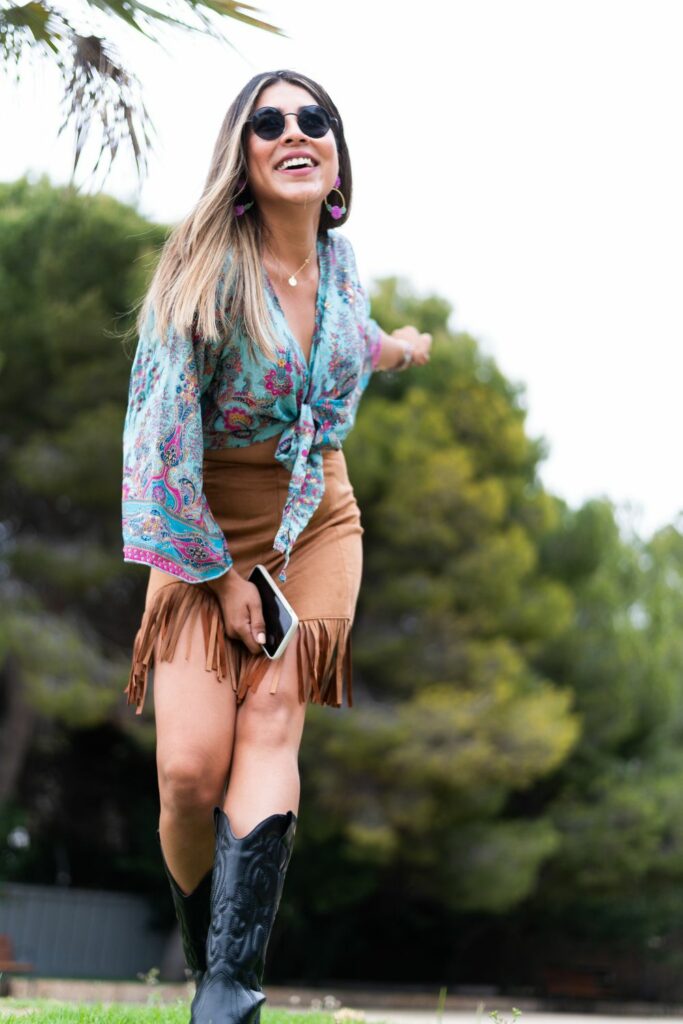
Experimentation is the spice of life when it comes to fashion, and dabbling in the new and unfamiliar can be a revelatory experience in your style journey. Venturing outside your comfort zone is not about discarding your signature look—it’s about evolution and refining your personal style.
Why Try New Trends?
Trends are a snapshot of what’s current, a living dialogue about where fashion is at any given moment. They can offer fresh perspectives and challenge you to think creatively about your wardrobe.
Even the most timeless of wardrobes can benefit from a hint of the contemporary to keep it vibrant and relevant.
Experimentation Leads to Discovery
By experimenting with new styles, you learn not just about fashion, but about yourself. You discover preferences you didn’t know you had and rule out what doesn’t work for you.
Perhaps those wide-legged pants you were hesitant to try become your new favorite silhouette, or you might find that the bohemian look you admired on others doesn’t quite feel right when you wear it.
How to Experiment Wisely
- Start Small: If a full-on trend seems too daunting, start with accessories. A bold new hat or a contemporary piece of jewelry can be a dip in the pool before the plunge.
- One at a Time: Avoid a complete style overhaul. Integrate one new trend into your outfit while keeping everything else within your established style. This will make the new feel familiar.
- Focus on Fit: No matter the trend, fit is key. An item that fits well will make you feel more comfortable when trying out a new style.
- Mix with Confidence: Pair new trends with your favorite pieces. This not only eases you into experimenting but also helps define if the trend can become a part of your personal style.
- Be Yourself: Whatever you wear, wear it because it resonates with you. Your clothes should be an extension of your personality, not a costume you put on for others.
The Role of Reflection in Experimentation
After trying out a new style or trend, reflect on how it made you feel. Were you comfortable? Did it make you feel confident? Did it align with your personal style objectives? This reflection is crucial because it turns experimentation into an informed style choice rather than a fleeting whim.
The Joy of Learning Through Experimentation
Each new fashion experiment, whether successful or not, is a learning opportunity. It’s important to remember that not every trend will be for you, and that’s perfectly fine. Fashion is a personal journey of finding joy and self-expression through your sartorial choices.
Embrace the trial and error of fashion; enjoy the process of discovering and incorporating new elements into your style. With each step out of your comfort zone, your personal style becomes more nuanced, more distinguished, and more reflective of the unique individual you are.
Consistency and Evolving Your Style
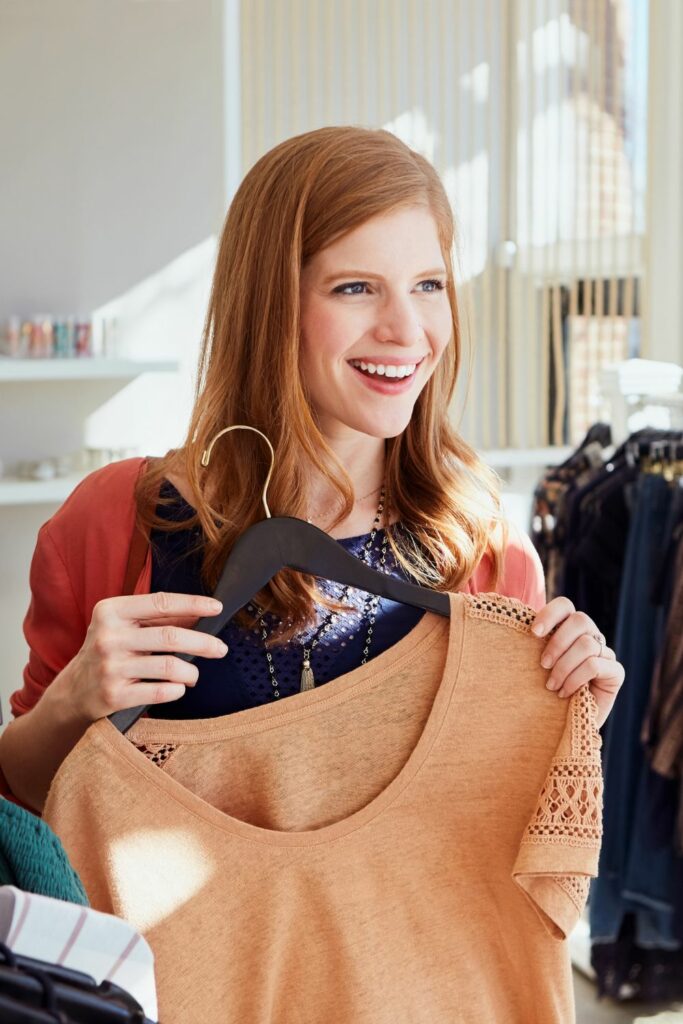
Maintaining consistency in your style isn’t about stagnation; rather, it’s about having a reliable foundation that evolves along with you. This balance is essential, as it ensures that your fashion choices stay authentic to who you are, even as your tastes, body, and lifestyle change over time.
Embracing Evolution Within Consistency
Consistency in personal style provides a sense of identity. It’s the thread that weaves through your wardrobe, tying your past and present together. However, as you journey through life, it’s natural for your style to evolve. Embracing this evolution is key to keeping your style fresh and aligned with who you are at any point in your life.
Tips for Adapting Personal Style
1. Reflect Regularly
Take the time to think about what you love and what no longer serves you. Reflect on the changes in your life and how they might influence your style.
2. Edit Your Wardrobe
As your style evolves, edit your wardrobe. Donate, sell, or repurpose pieces that no longer fit your style narrative.
3. Focus on Fit
Your body changes over time. Ensure that the clothes you wear fit your current shape. Tailoring can revitalize older pieces that you still love but that may not fit as they once did.
4. Stay True to Your Tastes
While it’s great to experiment, stay true to the core of what you like. You can explore different patterns, colors, and cuts while still maintaining the essence of what makes you comfortable and confident.
5. Update with Purpose
When updating your wardrobe, do so with intention. Select items that reflect both the current you and the direction you wish your style to go.
6. Align with Lifestyle Shifts
Your wardrobe should reflect changes in your lifestyle. If you’ve started a new job, become a parent, or take up a new hobby, your wardrobe should accommodate these new routines and activities.
7. Stay Informed and Inspired
Keep an eye on current trends and how they might harmonize with your style. Take inspiration from fashion influencers who share a similar lifestyle or whose style you admire for their evolution.
8. Set a Core Style Statement
Identify what fashion means to you in one sentence. This statement can guide your choices and ensure that no matter how much you evolve, you remain faithful to your style ethos.
9. Be Kind to Yourself
As your style evolves, there might be hits and misses. Be kind to yourself and recognize that each choice is a part of the journey of honing your style.
The essence of personal style is that it’s deeply personal. It’s a way to tell your story without words. Balancing consistency with an openness to evolution means your style can grow as you do, reflecting your life’s journey most beautifully and authentically.
Whether through subtle changes or bold transitions, the way you adapt your style can be a testament to your growth and the person you become in every phase of your life.


